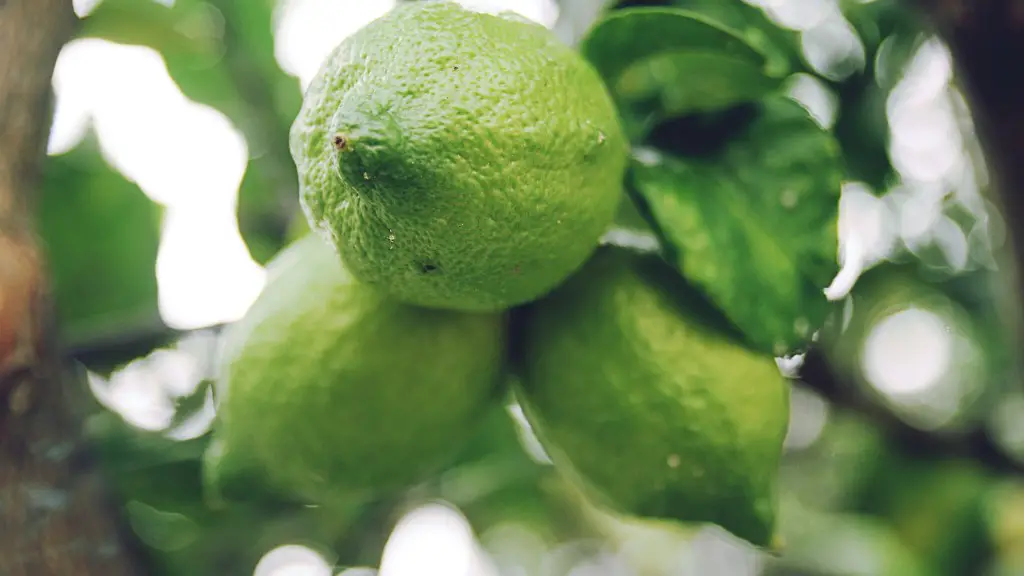How to Grow an Avocado Tree Indoors
Avocados are great for cooking, adding to salads and making guacamole. While you might think avocados only grow in tropical climates, it is possible to grow an avocado tree indoors, in almost any climate. Here are a few tips for growing a healthy avocado tree indoors.
The first step to growing an avocado tree indoors is to purchase a ripe avocado. The best avocados to buy are those that are firm, dark green in color and with no bruises. At home, you will want to split the avocado in half by cutting it lengthwise. The seed should be seen in one of the halves, so take out the seed carefully.
Next, you will need to clean the seed of any flesh. Place the seed in a lightly salted bowl of water, and rub off the remaining bits of flesh. Then microwave the seed for about 20 seconds. This will make the seed more easily removable from the core.
The seed should now be wrapped tightly in a damp paper towel, then placed into a sealed plastic bag. This should then be stored in a warm, dry place, such as on top of a radiator or above a hot water heater. Make sure to check the paper towel regularly, as it should be kept damp at all times.
After a few weeks, the seed should start to sprout. When it does, you will need to remove the seed from the paper towel and transfer it to some potting medium. A good option is a mix of equal parts of perlite or coarse sand, peat moss and vermiculite. Make sure that the pot is filled with at least 2 to 3 inches of the mixture.
You will also need to get a pot that is large enough for the avocado tree to prosper in. This pot should be at least 18 inches in diameter and 12 inches deep. Once the avocado seed has been planted, make sure to keep the soil moist but not soaked, as overwatering can kill the root system.
Finally, place the pot in an area of your home that receives indirect sunlight, as too much direct sun can be damaging to the tree. Watering and pruning should also be done periodically in order to keep the tree healthy.
How to Care for an Avocado Tree
Caring for an avocado tree indoors can be quite a challenge, as the tree needs plenty of sunlight and the right amount of water at all times. Make sure that you keep the tree in an area of your home that has access to plenty of indirect sunlight. You should also water the tree regularly and make sure that the soil is moist but not soaked.
The tree should be pruned as necessary, as this can help promote healthy and compact growth. If the tree is getting too large, you can prune some of the branches or foliage off in order to ensure that the tree is not becoming too big for the available space.
It is also recommended that you fertilize your avocado tree periodically, as this can help promote healthy growth and fruiting. A water-soluble fertilizer is the best option for an indoor avocado tree, but make sure to dilute it to half strength, as this will help prevent any fertilizer burn.
Lastly, if you want your avocado tree to produce fruit, you will need to make sure that it receives pollination. If you are only keeping one tree indoors, you can use a small paintbrush to pollinate your tree manually. This should be done periodically in order to ensure that your tree is properly pollinated.
Potential Challenges when Growing an Avocado Tree Indoors
One of the biggest challenges when growing an avocado tree indoors is providing it with the right amount of light. While the tree needs plenty of sunlight in order to thrive, too much direct sunlight or heat can be damaging to the tree. Make sure that the tree is not placed near a window or other sources of heat such as radiators.
It can also be challenging to keep the avocado tree watered, as too much or too little water can be damaging for the tree. Make sure that you water the tree periodically and that the soil is kept moist but not soaked. If the soil is dry, then it may be time to water the tree.
Finally, if your avocado tree is producing fruit, it is important to harvest the fruit at the right time. Avocados should be harvested when they are soft and slightly light in color. If left on the tree for too long, the fruit may not be very flavorful or ripe.
Common Diseases That Affect Avocado Trees
There are a few common diseases that can affect avocado trees, and it is important to be aware of them and know how to prevent them. One common disease is Phytophthora root rot, which is caused by fungal spores in the soil that can infect the tree’s roots. To prevent this disease, make sure that you are using a potting mix that has good drainage.
Botryosphaeria canker is another common disease that can affect avocado trees. This disease is caused by fungal spores that can infect the branches and foliage. To prevent this disease, make sure to keep your tree pruned regularly and avoid over-watering.
Finally, anthracnose is another common disease that can affect avocado trees. This disease is caused by fungal spores that can infect the leaves and fruit of the tree. To prevent this disease, make sure to water your tree evenly and provide plenty of indirect sunlight.
Additional Tips for Growing an Avocado Tree Indoors
When growing an avocado tree indoors, it is important to pick the right pot. The best pots for avocado trees are terracotta or plastic containers that have good drainage. Clay pots tend to be the best option, but you can also choose a plastic container if you prefer.
It is also a good idea to place a plant saucer or tray underneath the pot. This will help to catch any water that may run off, and will also help to protect the surface under the pot from any damage.
You may also want to consider using rooting hormone on the avocado seed before planting. This can help to promote faster root growth and can make it easier for the tree to take to the soil.
Finally, while it is possible to grow an avocado tree indoors, it can be a challenge. Make sure that you research how to properly care for the tree, and be prepared to provide the tree with the right amount of sunlight, water and nutrients.
Propagating Avocado Trees
If you would like to propagate your avocado tree, you can use the same method as described above with the avocado seed. You can also use branch cuttings if you want to propagate a tree from an existing tree. All you will need to do is take a cutting from a healthy branch and place it into a pot of potting medium.
Make sure to keep the medium moist but not soaked and place the pot in an area with indirect sunlight. After a few weeks, the cutting should start to sprout and eventually form its own roots. Once the cutting has rooted, you can transfer it to a larger pot and begin to care for it as you would a regular avocado tree.
If you choose to propagate a tree from a branch cutting, make sure that the branch you take is healthy and free of any pests or diseases. If the branch is infected, the disease or pest could spread to the new tree as well.
Tips for Harvesting Avocados
Not all avocados are ripe at the same time and the ripening of each avocado can vary. To determine when an avocado is ready to be harvested, you can check the skin color. Generally, if the skin is turning dark green or brown, it is close to being ripe and ready to be picked.
Another way to test for ripeness is by gently squeezing the skin. If the skin gives slightly, it is likely ripe. If the skin is too firm, then the avocado is not yet ripe, and should be left on the tree for a few more days.
Finally, there are some signs that the avocado has been left on the tree for too long. These include areas of soft, brown flesh, or an overly soft skin. If the avocado is too soft or mushy, it has likely gone bad and should not be eaten.
Tips for Storing Avocados
If you would like to store avocados for later use, you can do so by ensuring that your avocados are ripe. If the avocados are ripe, they can be stored in the refrigerator for up to a week. Make sure to keep them in an airtight container or bag, and make sure that they are away from any sources of heat or direct sunlight.
If the avocados are not yet ripe, they can be stored at room temperature. Place the avocados in a brown paper bag and store them in a cool, dark place. This will help to speed up the ripening process and will ensure that the avocados stay fresh for as long as possible.
If you have avocados that are ripe but you don’t plan on using them right away, you can also store them in the freezer. Peel and pit the avocados, then wrap each one tightly in plastic wrap or wax paper. Place the avocados onto a baking sheet and then transfer them to the freezer. The avocados should last for up to six months in the freezer.



